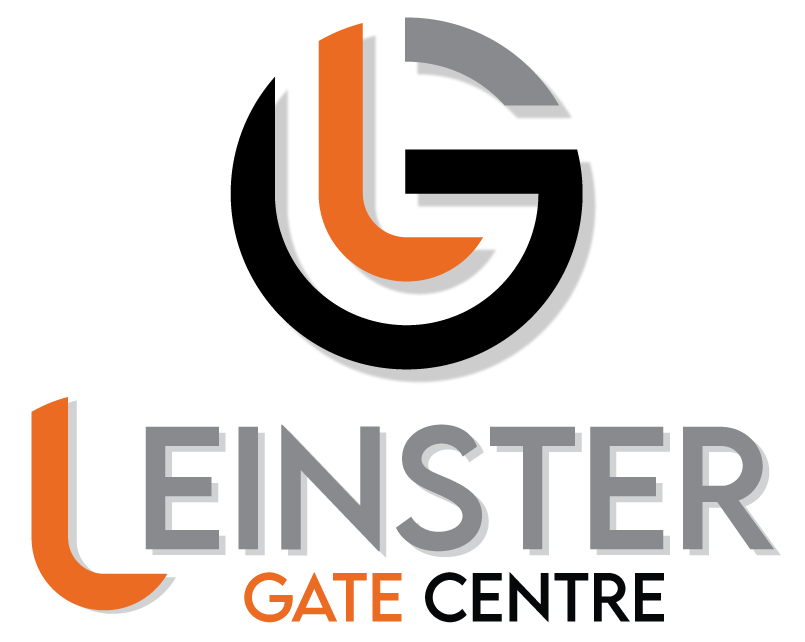Helpful advice when purchasing a gate
When purchasing a driveway gate, keep in mind the overall purpose of the gate which should enhance the intended security of the property and be easily accessible by the owners. A good design should complement the overall look of and add value to the property.
It is better to have an idea of where and why you want to install it. A driveway gate should complement the fence, wall or pillars to which it will be attached. The material chosen for your gate should function to either prevent entry or exit as well as be designed to suit the way in which it needs to open. Driveway gates may open manually or be automatic.
Automatic gates may be triggered electronically from a central building – residential or commercial – by using an electronic gate code or via wireless signal used in a remote device. Electronic gates provide a higher level of security whereas manual gates which are opened and closed by hand are suited to properties where animals and children are not resident or able to unlock them.
Driveway gates are traditionally between 5 and 6 feet in height, varying in width depending on the size of the entrance requirements.
+ Do I need to have pillars?
If you have no pillars and you don’t want the hassle of getting a builder in, we have another option for you.
We can fabricate steel posts and set them into the ground. The posts look well, are long-lasting and a simple solid solution for hanging your gates. The images below indicate some posts that have been fabricated.
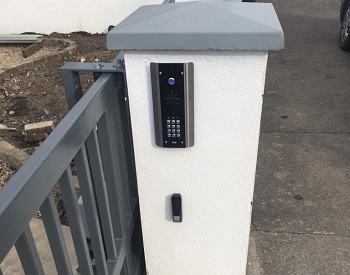
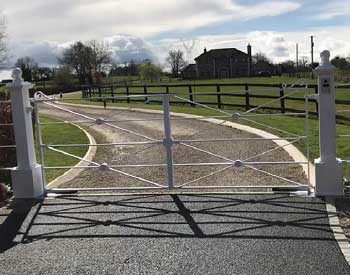
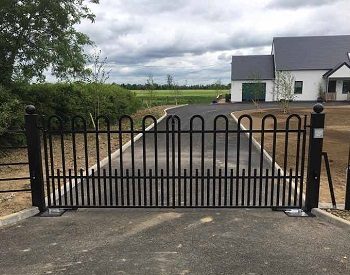
+ How do I know if my pillars are structurally sound?
When your pillars are built, they are generally infilled with an RSJ (rolled steel joist) and concrete. But sometimes this is not the case or you may not know. We can determine this for you during a site visit by drilling a small hole at an inconspicuous point of the pillar. If it is hollow don’t worry, we have ways to work around this for you.
Our team of gate installers can prepare a filling solution which, when set, can support your gate
+ What if there is a slope on the entrance?
Some driveways have a slight slope and if this is the case for your driveway we have some options to counteract this issue. All of which can be discussed with our gate expert.
Design of your new gates will depend on how steep the slope is – the severity of the gradient.
Accurate measurements are required to ascertain if a swing gate is an option, but often a sliding gate is probably the best solution if you have space for one. These can be designed to appear as they are two gates joined in the centre.
We try to redesign your gate according to your driveway entrance and the lowest gate where we could achieve an inward opening gate with and that wouldn’t look ridiculous. The last resort could be to swing out towards road with the installation of added safety features – but we prefer not to do that.
Key considerations would include the escape of small dogs – liable to get out underneath – and whether there would there be room for a child to get out.
Regulations exist about the ‘closing gap’ – e.g. a child lying down near the gate – as the gate crosses that slant it reduces in size. All Leinster Gate Centre gates are made in compliance with regulations – to stop – detect that stop and close (or go back the direction it was coming from) at that stage.
Safety feature – this is the benefit of being installed by professionally qualified installers.
If you have a slope, there is always a solution – send in your photos and we can advise.
A site visit is always required to measure and discuss designing gates for sloped entrances.
+ What materials are used to fabricate my gate:
Our gates are fabricated using mild steel. We use mild steel because it is very strong and it has a high resistance to breakage resulting in long lasting products for our customers.
We also use a number of timbers and PVC infills depending on the style of gate that you choose. Or take a look at our latest aluminium gate designs.
+ What is galvanizing and why do I need to galvanize my gates?

Hot-dip galvanizing is the process of immersing steel in a bath of molten zinc to produce a corrosion-resistant, multi-layered coating. This prevents your gates from rusting and prolongs their life span. While galvanizing the gate is not a necessity, Steel needs to be protected in order to retain its properties. The best way is to hot-dip galvanize which provides a protective base coat that can last more than 50 years so we do strongly recommend that you have your gates galvanized. If steel is left untreated over time the steel will erode and cause your gates to rot and look unpleasant.
Advantages of galvanizing your gates
- Long-term corrosion protection
- No maintenance required
- Resistant with high abrasion and impact resistance
- Attractive appearance
- Cathodic corrosion protection
Leinster Gate Centre strongly advises against leaving your gates untreated.


+ What is powder coating and is it better than liquid painted steel?
Powder coating is a safe, dry finishing process that uses finely ground particles of pigment and resin to create a protective finish. We choose to powder coat our steel frames because it is low in toxicity and has low flammability. To create magnetic attraction, the finely ground particles of pigment and resin are charged with static electricity and then sprayed onto steel that is electrically grounded. The powder coating is then evenly melted and cooled into a thin, durable film.
Advantages of powder coating:
- Durability
- Corrosion-resistant
- Chip resistant
- No maintenance
- Long-lasting finish and colours
Our steel gates can be finished off in a colour of your choice of RAL colours. We also galvanise and powder coat the steel frames on our timber gates. These can be coloured to suit your house design.
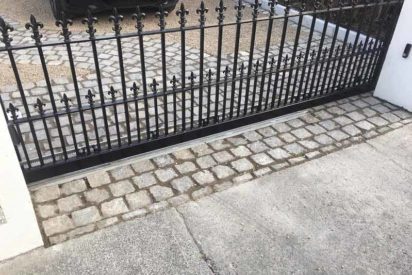
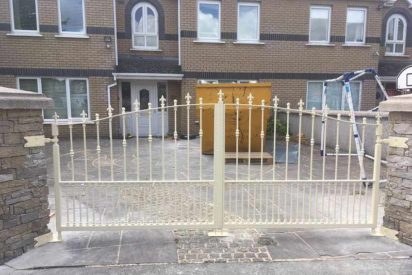
+ What maintenance is needed on the gates?
If your gates are galvanized and powder coated you will have a long-lasting maintenance-free finish so you will have little to do to keep your gates looking fresh;
Use water and a sponge to clean off any dust and debris;
If you have a timber infill you will need to treat the timber annually to avoid rot;
If you have a PVC infill again you will have no maintenance, (except to wash when as required).
+ RAMS Vs underground – How do I know what automation system is best?
If you can imagine you are opening your hall door- your handle is the farthest away from the hinge point and it is easy to push and pull that door closed. If you are to come closer to the hinge point and try to open and closely our door it gets much harder.
An underground box or operator pushes and pulls your gates from about 6 0r 8 inches which is so far from the hinge point
Your over ground straight point or RAMS – push and pull from about halfway – about a metre – so automatically they have a better leverage for pushing and pulling the gate. And more importantly, in strong winds they have a better leverage point for holding the gates.
So, only because the geometry of them, they have an advantage. The disadvantage is they are big horrible ugly looking yoke on your lovely gate. Aesthetics on a steel gate with bars vs solid timber gate – Unattractive, not as tidy.
Where we can use over ground rams on timber gates, we will. Especially timber gates as they are heavy. Especially in the winter with crazy storms and crazy winds. A 6ft high and wide gate – in strong winds, you wouldn’t hold it closed yourself. Puts serious pressure on the rams.
+ Why do you only use FAAC & CAME for automation?
Leinster Gate Centre works exclusively with what is in our opinion, the two best brands in electric gate automation. This allows us to stand over all of our automation works and offer the best warranties and maintenance plans.
+ Do I need to have power at the entrance?
If you have no power to the entrance of your house already we can bring it out for you and we do this by connecting to the nearest power source to the entrance, usually a socket or fuse board in either the house or garage.
+ What happens if there is a power cut?
If there is a power cut there is no need to worry about being trapped inside or outside of your driveway. When the automation system is installed our Engineer will go through the instructions of the system and also provide you with a key to turn the system to manual enabling you to open and close the gates while the power is out, we also provide a user manual showing you how to do this.
+ What do I do if I have concerns about my gate?
Generally speaking, someone who installs their own gate automation is not going to have an EN compliant gate unless they do their force testing correctly.
We all know that people get their friend / handy person to add electric gate kits to their gates – which is great in theory, and probably appear to reduce their costs of installation, but the reality is that they are often not EN compliant because they lack safety testing.
Particularly with children, small animals and visitors to your property, it is advisable to ensure that your gates are installed and maintained to the required safety standards. If it is your property, you need to ensure the gates are safe.
If you are selling or have bought a property with electric gates, it is advisable to identify what maintenance and warranties exist.
If you have any concerns at all about your gates, contact us and will discuss options for a safety check. Book a repair here.
+ What do I need to do to get a quote?
To enable us to conduct business efficiently and continue issuing quotes for new electric gates, we have introduced a virtual site survey system. The aim of the system is to serve our customers whilst reducing face to face contact for everyone – keeping both our customers and our staff safe.
There are six steps in the process:
- Taking images of the entrance;
- Getting measurements (see guide below);
- Advising of the style gate, automation type;
- Will you need assistance with power supply;
- A quotation issued via email & discussed;
- Confirmed orders will require a contactless measurement by us.
Read more about our site surveys
+ What rules & regulations apply to gate design and automation?
All of our gates are EN compliant. In the past Irish gate manufacturers used to work off the British standard but have our own regulations now.
In addition to regulations, the onus on us as installers but also gate owner for regular maintenance/servicing. If it is a management company, they have a responsibility – legally, to have an annual maintenance contract. (either do it themselves or use a company like Leinster Gate Centre). They have a duty of care to maintain the gate.
+ Why do Leinster Gate Centre not cover timber in their warranty?
Leinster Gate Centre Ltd does not cover warranty on any timber, painted or varnish finish on timber and we do not accept any responsibility for how timber ages or suffers from deterioration.
Your purchase of a product with timber infill indicates your agreement to and acceptance of our company’s Terms and Conditions.
Under no circumstances (including but not limited to any act or omission on the part of Leinster Gate Centre Ltd) will Leinster Gate Centre Ltd be liable for any timber products. This does not affect your warranty on steel/aluminium frames, structures and automated products.
Visit our Warranty Page to learn more
+ Common Hazard Types
Crush – Exists in all horizontal gaps reducing to below 500mm and all vertically reducing gaps.
Impact – Contact with a horizontally moving leaf outside of a crushing zone.
Shearing – Where a moving leaf crosses a fixed structure to create a guillotine effect.
Draw-in – Where a moving leaf crosses a fixed structure and could draw a body part into the gap.
Cutting – Risks caused by sharp protrusions.
Hooking – Where clothing or body parts could snag on a moving leaf.
Entrapment – Where movement or lack of movement closes off a means of escape.
Please see the resources section below:
+ Resources:
Below please find links to the relevant regulations which must be adhered to in the design and automation of gates and electric gates.
Health & Safety Authority
Guidelines on the safety of powered gates
Download the guidelines here
IS EN STANDARDS
EUROPEAN COMMUNITIES (MACHINERY) REGULATIONS 2008
dhf
Leinster Gate Centre gate installers are trained by the Door Hardware Federation – dhf
THE PRIVATE SECURITY AUTHORITY
The Private Security Authority (PSA) is the statutory body with responsibility for licensing and regulating the private security industry in Ireland. The PSA is an independent body under the aegis of the Department of Justice and Equality. Established following the passing of the Private Security Services Act in 2004, the PSA started licensing security contractors in 2006 and security employees in 2007. The PSA’s head office is in Tipperary Town with inspectors operating nationwide.
All Leinster Gate Centre automation is installed by PSA licenced experts.
